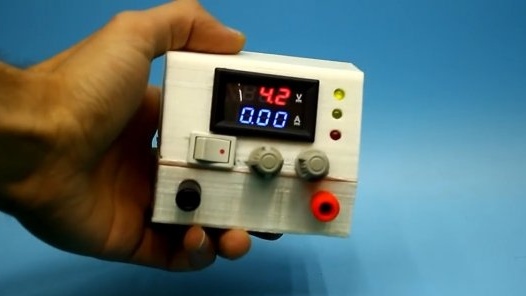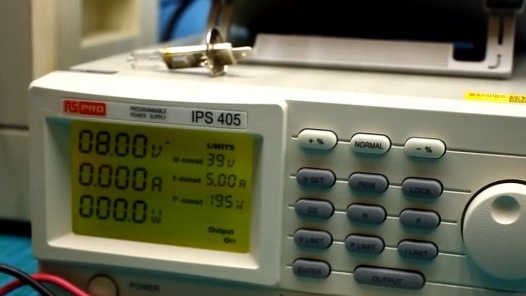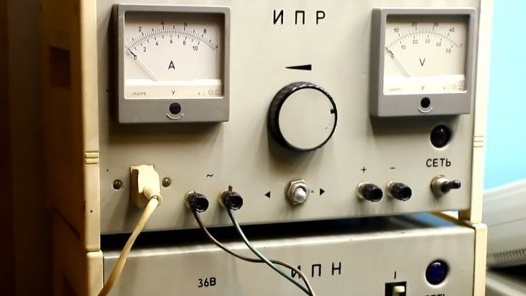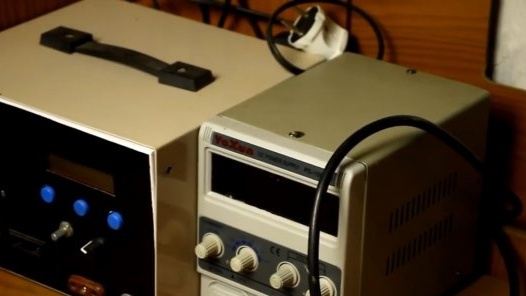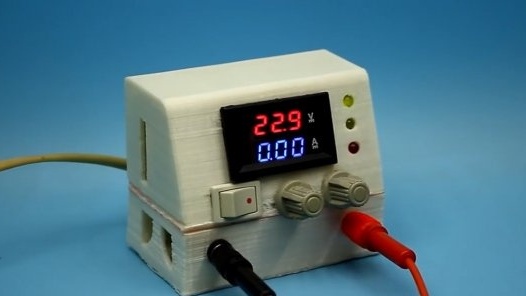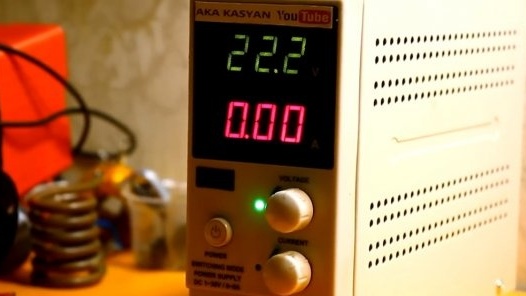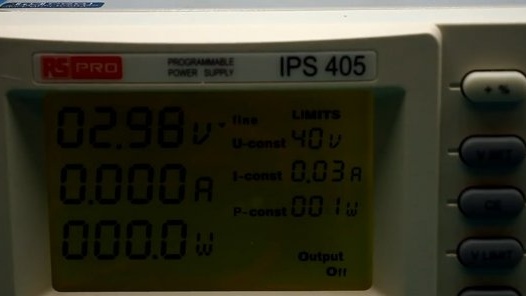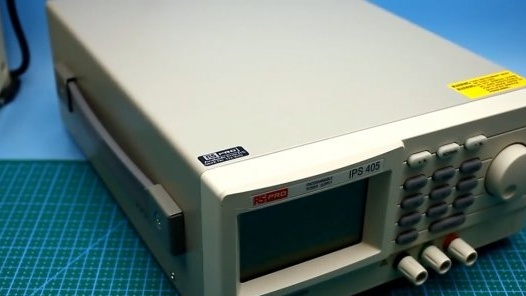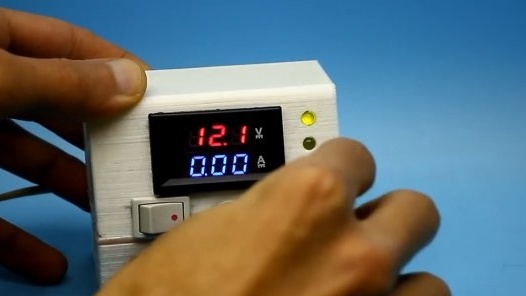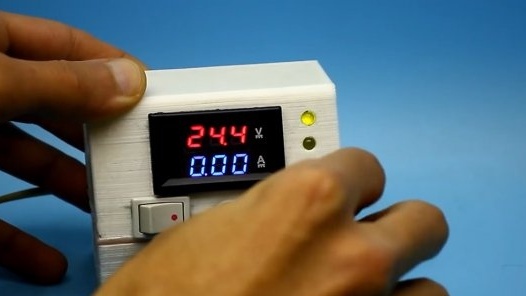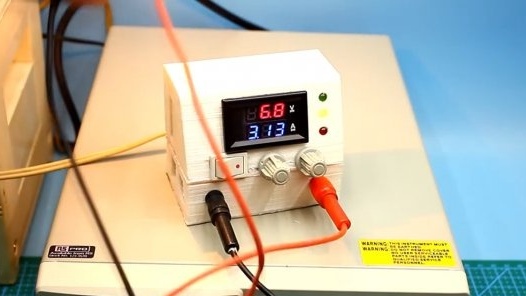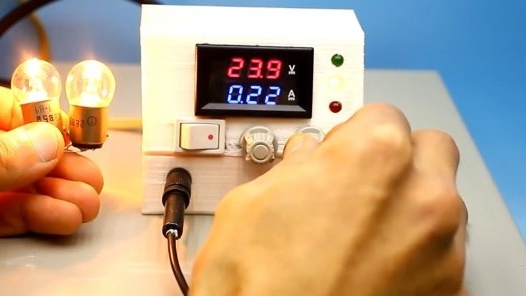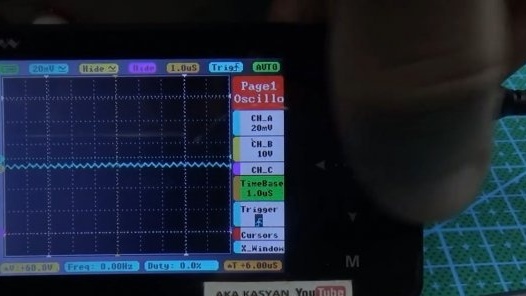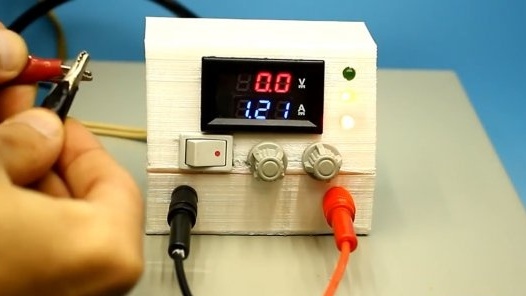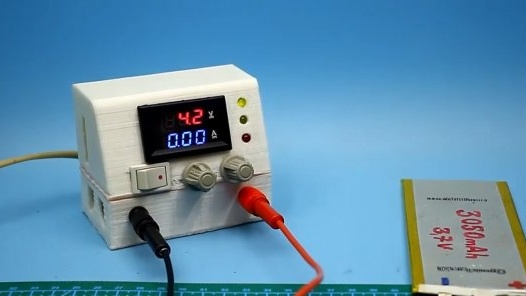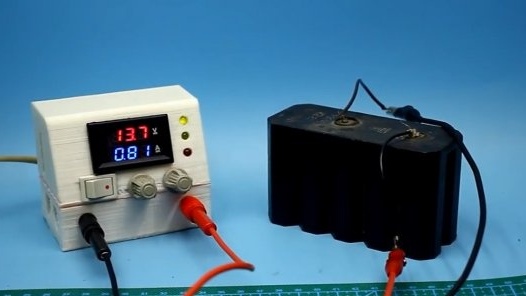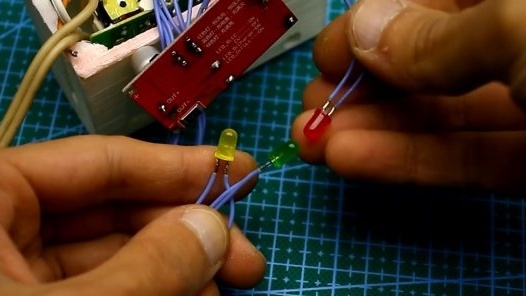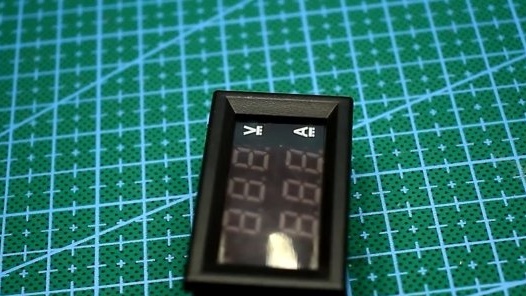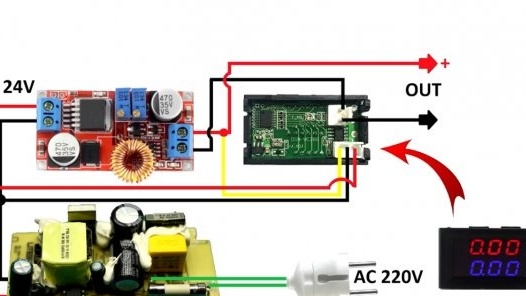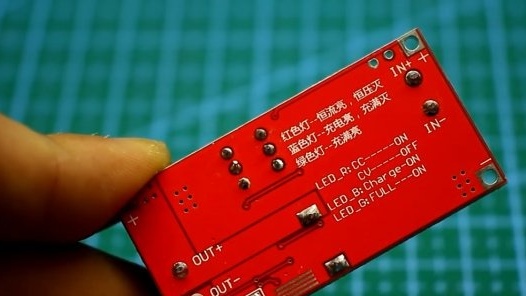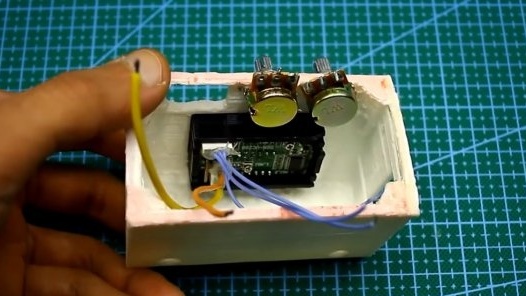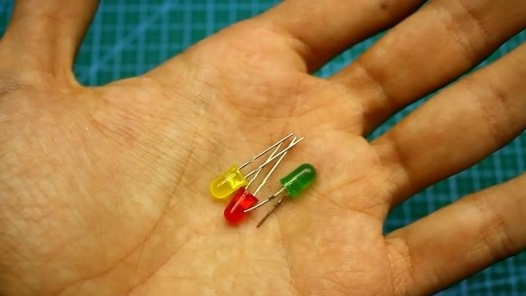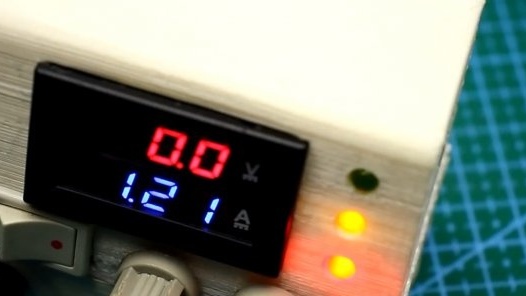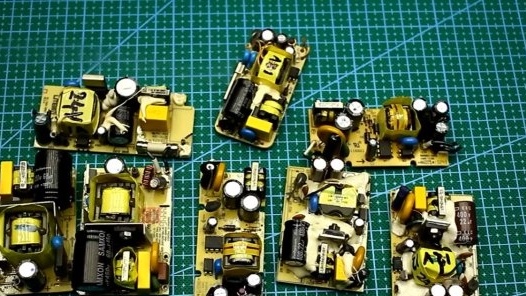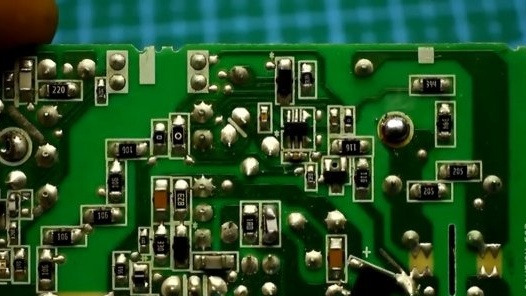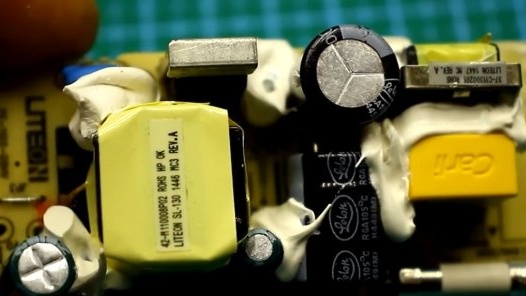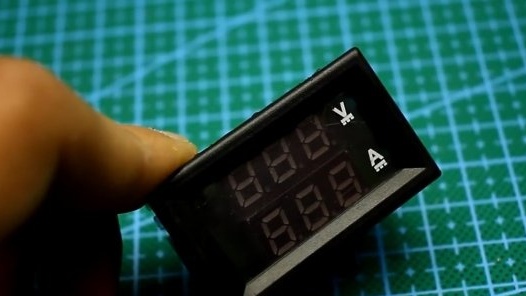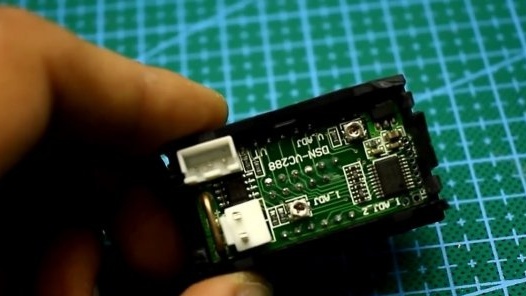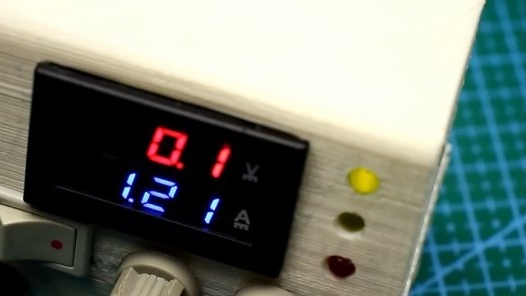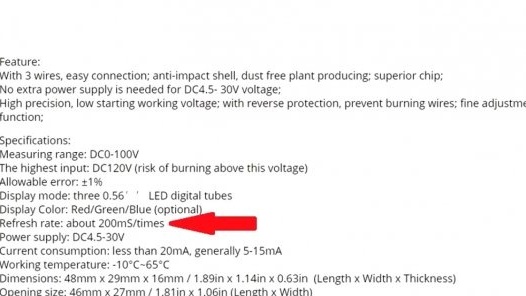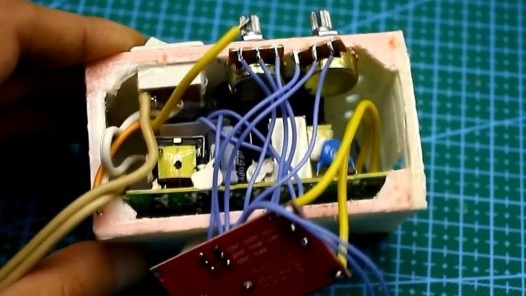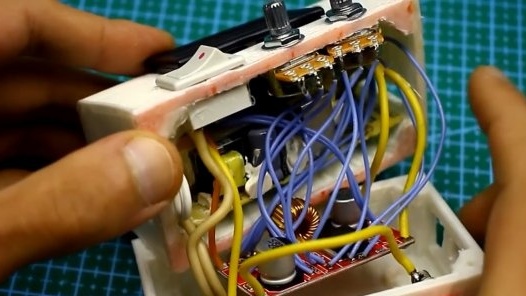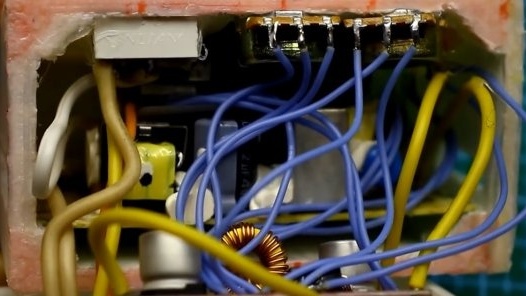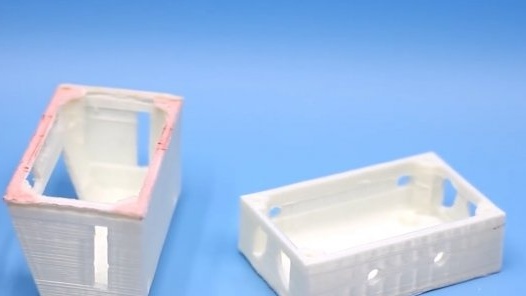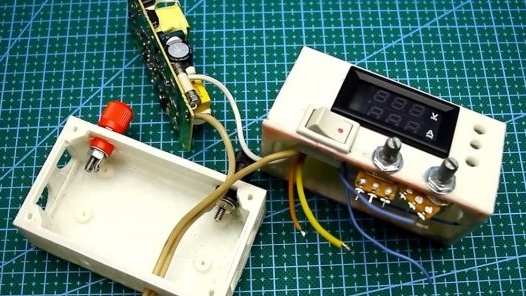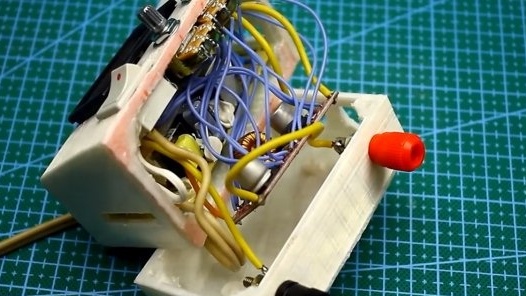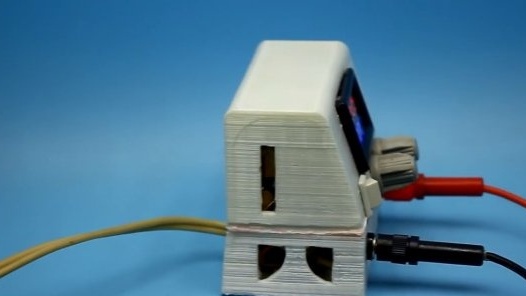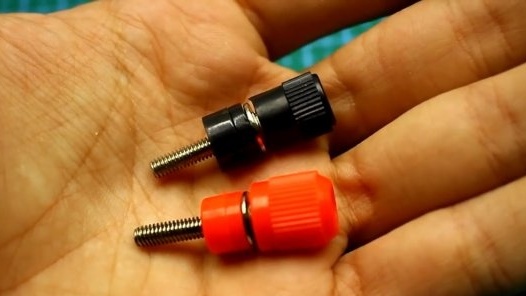Greetings the inhabitants of our site!
In 2017, AKA KASYAN (author of the YouTube channel of the same name) made a compact adjustable power supply for personal use and used it until one of the annoying friends asked for it.
Despite the fact that the power supply had very modest characteristics, in some tasks it was indispensable, so about a month ago, the author decided to make himself a similar unit.
In general, the author has a lot of laboratory power sources, but each is sharpened for certain tasks and not one of them is superfluous.
A power supply unit of such compact dimensions is very convenient for some kind of field work, and it will also be very useful for hams with a small working space.
Main advantages: very low cost (the cost of all components does not exceed $ 10) and high repeatability, since the unit is assembled completely on ready-made Chinese modules.
To be honest, you cannot call it a full-fledged laboratory power supply, since the stabilizer module used in this unit is not a super-duper, but such power supplies have the right to life.
The author has two main laboratory power supplies: this is a budget Chinese, which is located on the desktop, where the author actually solders, and a programmable power supply and IPS 405 from RS, which the author uses for about 3 months and is very pleased.
This is a professional, single-channel, programmable 40V, 5A power supply with a large functional display and very cool digital control. It has advanced functionality and high quality output voltage.
Well, now let's look at the main characteristics of our baby. The first is to adjust the output voltage in a range of anywhere from 1V to 24V, the current adjustment range is literally from 0 to 1A.
At voltages up to 6V, a current of up to 3A can be removed from the power supply, although for a short time.
The ripple of the output voltage at a current of 1A is about 120-150 millivolts, and this is a lot, therefore it can not be called a full-fledged laboratory worker.
For example, with the same IPS405 with the same current of 1A, voltage ripples are less than 5 mV. Although you’ll agree, it’s stupid to compare a power supply unit from cheap modules with a professional power supply, the price of which is 30 times higher than that of a homemade one.
And it should be noted that in IPS405, despite the switching power supply, the control is completely linear.But back to our power source, the block diagram is now in front of you:
It is important to note that this is a stabilized power source, both in voltage and in current, that is, the set value of current and voltage will not change depending on the load and instability of the mains voltage. The block is naturally not afraid of short circuits, the current limit will simply work.
With it, you can safely charge batteries of any type with stable current and voltage.
Also, the power supply has an LED indication of operating modes and a digital multimeter.
The case for this project was printed on a 3d printer, a link to model for printing you will find in the description under the original video of the author (link SOURCE at the end of the article).
The filling consists of two blocks: this is a network switching step-down power supply and a stabilizer board based on the xl4015 chip.
Such a board is designed for a maximum current of 5A, although in this case it needs to be cooled.
In our case, a current of only 1A is required, therefore, during operation, such a board does not even heat up. On the stabilizer board we have 2 trimmer multi-turn resistors of 10 kOhm for adjusting current and voltage. They were replaced by conventional variable resistors of the corresponding resistance.
The same is in the case of smd LEDs, their author replaced with conventional 5 mm LEDs and brought to the front panel. The board was not subjected to other alterations.
Source of power. Some time ago, on aliexpress, the author purchased several low-power power supplies with different output characteristics for a variety of projects.
These blocks are used, but they are assembled very competently and have high reliability. In our case, a 24-volt power supply with an output current of 1A was used, but real measurements showed that it is capable of more.
The power source is very compact, but despite this, it has a power of about 24W. Heats up at maximum power, but the heating is stable and does not go beyond. The source has high-speed protection against short circuits and a good line filter, and the output voltage is naturally stabilized.
The voltammeter is the most common, designed for a maximum current of 10A.
Voltammeters of such a plan may differ from each other in the first place by the connection scheme and the speed of updating the readings.
This option is rather slow; for laboratory power supplies, the author advises choosing a multimeter with a refresh rate of about 100-150 and less than milliseconds. This means that the data on the display will be updated 10 times per second and there will be no indicator slowdown effect, as in this case.
All the wires that are used in this power supply are not quite ordinary. These are flexible stranded wires in heat-resistant silicone insulation, as some parts of the power supply can be heated, and the wires are randomly scattered throughout the case.
The "guts" of the power supply unit do not look quite presentable, but it is almost impossible to shove the whole thing into such a small case and take care of beauty.
The housing has ventilation openings for natural air cooling, taking into account the low power of the power supply, as well as a fully pulse filling with high efficiency, there are no problems with excessive heating of certain nodes.
It is clear that the assembled power supply is not designed for long-term operation with a large load. It is worth repeating that it is more suitable for field work. And so, charging small capacity batteries, repairing mobile phones and other portable equipment without problems. There is everything you need for these purposes. In the description under the original author’s video you will find the necessary links to all components for the assembly of similar power supplies (link SOURCE).
Well, that’s all.Thank you for attention. See you soon!
Video:





